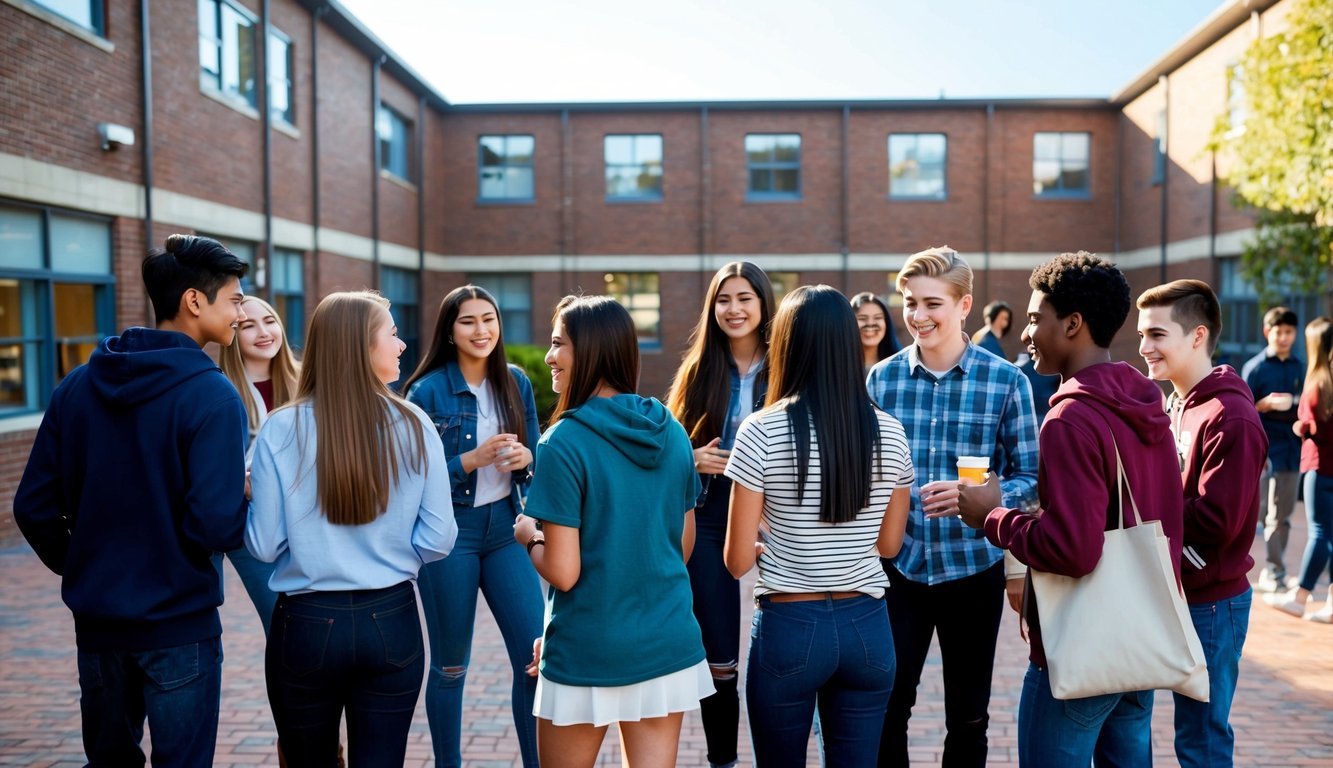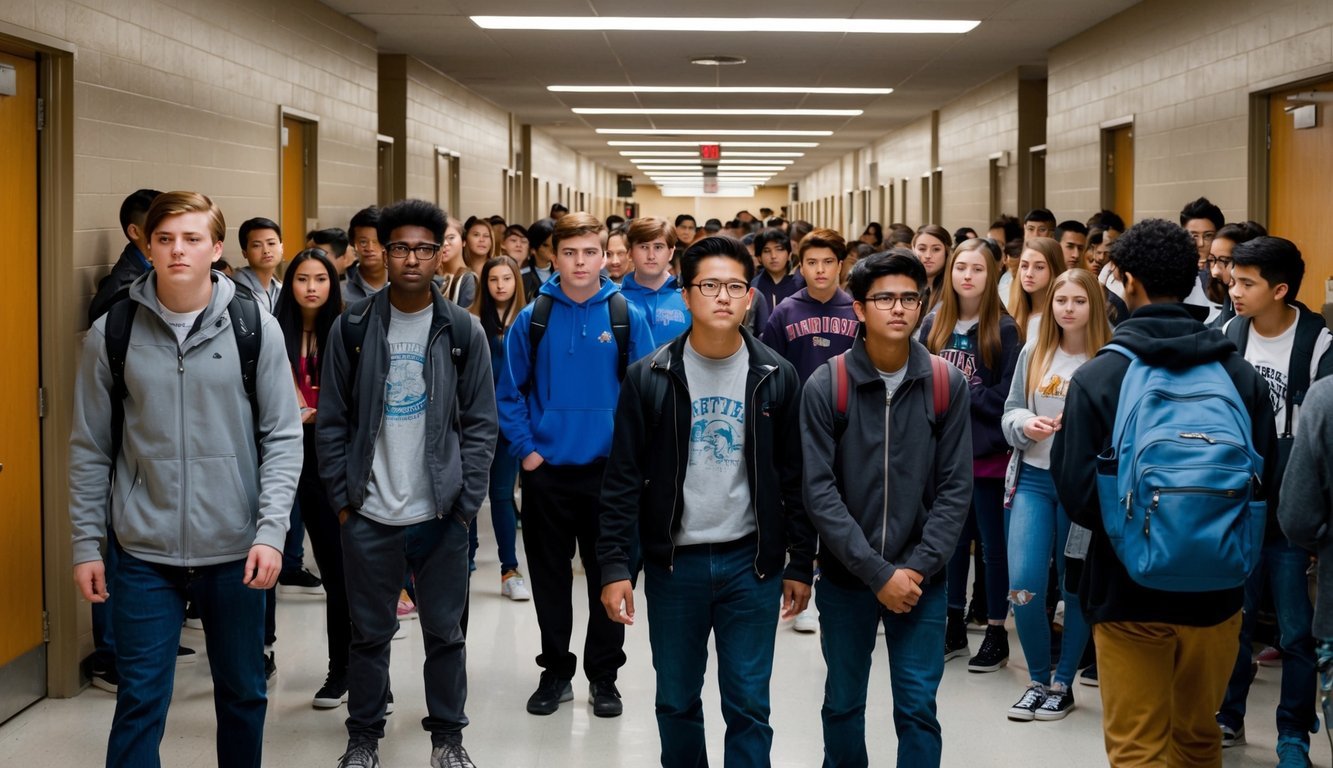PsychNewsDaily Publishers
100 Summit Drive
Burlington, MA, 01803
Telephone: (320) 349-2484
PsychNewsDaily Publishers
100 Summit Drive
Burlington, MA, 01803
Telephone: (320) 349-2484
Age significantly influences student popularity in schools, with older students often perceived as more mature, socially skilled, and likely to take on leadership roles among peers.

High school can be a challenging time for many students, but it turns out that age might play a role in popularity among peers. A recent study has shown that the oldest kids in the class are more likely to be seen as popular. This finding sheds light on how relative age within classrooms affects social dynamics.
Researchers examined data from thousands of teenagers in different countries and found a clear connection between being older and gaining popularity. Older students often have advantages, such as maturity and confidence, which can make them more appealing to their classmates.
This information is important for parents and educators as they seek to understand the factors influencing social interactions in schools.
With this insight, it becomes clear that age doesn’t just impact academic performance; it also shapes social status in high school. Exploring these dynamics can provide valuable lessons for students navigating their own paths to popularity.

Popularity plays a significant role in the social lives of adolescents. Factors such as age, social skills, and behavior can impact a student’s popularity status within their peer groups.
Popularity in high school often refers to the social standing of students among their peers. It can be linked to traits like charisma, confidence, and likability. Most often, popular students are well-known and have many friends.
Some students become popular due to their involvement in sports, clubs, or other activities. Being viewed as friendly and approachable can also elevate a student’s popularity.
In many cases, girls and boys define popularity differently. For instance, boys may value athletic ability while girls may focus on social skills and appearance.
Age is a key factor influencing popularity. Studies show that older students in a grade tend to be seen as more popular. This can be due to their maturity, experience, and social skills, which can positively impact their interactions.
Additionally, other factors like social skills and attitude also play a role. Kids who are kind, supportive, and demonstrate leadership qualities tend to have higher popularity statuses.
Also, outside influences like family and community can shape how adolescents perceive popularity. As they navigate through high school, these elements contribute to their social acceptance and friendships.

The relative age effect refers to how being older or younger than peers in the same grade can influence social status and academic performance. This effect is often seen in school environments, where age differences impact popularity and behavior.
Recent studies indicate that older students in a class tend to be more popular. This trend can be attributed to several factors.
For example, a 15-year-old in a class of mostly 14-year-olds may be chosen more often for team activities or leadership roles. Such dynamics can create an environment where older students often hold higher social status.
The relative age effect can also play a significant role in academic settings, influencing both social promotion and grade retention.
Research shows that older students are often more successful academically. They frequently achieve better grades and participate more in class discussions. This can create a cycle where older students continue to gain advantages in both academics and social circles.

Different countries have shown interesting results when studying high school popularity based on age. Research from the Netherlands, Sweden, and England provides valuable insights into how relative age affects popularity among students.
In the Netherlands, a survey of over 13,000 students revealed that older students were seen as more popular among their peers. Students aged 15 often ranked higher in popularity than younger classmates.
This trend appeared consistent across different schools in the country. The findings suggest that age provides certain advantages, such as maturity and confidence, which help students connect better socially.
Additionally, social group formations often revolve around age, reinforcing this popularity dynamic. Older students seem to attract more friends, which further boosts their status in school.
Sweden’s results fall between the findings from England and the Netherlands. In the study, older students in the class were also regarded as more popular, but the effect was slightly less pronounced.
The survey indicated that social interactions in Sweden often influenced popularity based on relative age. Age differences play a role in how students perceive each other, affecting relationships and group dynamics.
Older students tended to participate more in class discussions and social activities. This heightened visibility likely contributed to their popularity among peers.
In England, researchers identified a strong link between age and popularity in high schools. The study showed that students born earlier in the school year often enjoyed higher social status than younger classmates.
Among 14- and 15-year-olds, this trend manifested clearly, with older students more likely to be seen as leaders in school settings. They tended to engage actively in extracurricular activities, further enhancing their status.
This pattern indicates that being older allows for greater social skills, which are essential for popularity. As a result, schools in England face a unique challenge in addressing how age impacts social dynamics among students.

The relationship between age and popularity in school highlights important considerations for educational policies. These insights encourage schools to think about how age affects social dynamics and academic outcomes.
Redshirting refers to the practice of delaying a child’s entry into kindergarten. Some parents believe that being older can provide an advantage. This decision can impact a child’s social life and academic performance in school.
Older students may have more confidence and stronger social skills. They often become popular among their peers.
Schools must consider the long-term effects of redshirting. Policies could include education for parents about the implications of this choice.
Schools might also need to adjust grade structures. This could help balance age differences in classrooms.
By addressing redshirting, schools can support both academic and social development.
Research shows that older students may perform better academically. This can lead to higher grades and overall success in school. When older students are in class, they tend to set positive examples for younger peers.
However, the increased popularity of older students may lead to social challenges for others. Younger students might feel left out or struggle to fit in.
Schools should create inclusive environments where all students feel valued, regardless of age.
Programs focusing on peer mentoring can help foster these connections. By encouraging older students to support younger ones, schools can promote a positive atmosphere that benefits everyone.
It is crucial for schools to consider academic and social outcomes when developing policies that impact student age and placement.

Creating an inclusive environment in high schools is essential for all students. It allows everyone to feel valued and promotes friendships. Supportive strategies can help reduce cliques and encourage connections among diverse groups.
A supportive environment begins with strong leadership dedicated to inclusivity. Schools can implement programs that promote teamwork through group activities and projects.
Key actions include:
These practices help break down barriers and create opportunities for all students to connect. Schools should also ensure that bullying policies are clear and enforced effectively.
Understanding that every student has unique qualities is critical. Recognizing these differences helps in promoting inclusivity.
Steps to take:
When students feel acknowledged for who they are, it boosts their self-esteem. This recognition helps build meaningful connections, paving the way for a more inclusive school community.

This section addresses common questions about the relationship between age, popularity, and social dynamics in schools. It provides insights into how these factors interact and their effects on students.
Being the oldest in a class can boost a student’s popularity. Research shows that older students are often perceived as more mature by their peers. This maturity can lead to stronger social skills and more leadership opportunities, making them more likable and popular.
Yes, there can be long-term benefits to being popular in high school. Popular students may develop better social networks, which can help in college and career opportunities. They often gain confidence and improve their communication skills, benefiting them in various aspects of life.
Children usually start school around age five. This is the common age for kindergarten in many places. In some areas, children may start school a bit earlier or later, depending on local education policies.
Several traits can contribute to a student’s popularity. These include friendliness, confidence, a good sense of humor, and being helpful. Being involved in activities and showing kindness to others also play a significant role.
Yes, birth month and age placement can impact social dynamics. Students who are older than their classmates may feel more confident. This can create challenges for younger students, who might find it harder to connect socially.
The correlation between popularity and academic performance can vary. Some studies suggest that popular students may perform better academically due to positive peer relationships. However, popularity itself does not guarantee good grades. Motivation and effort are also important factors.